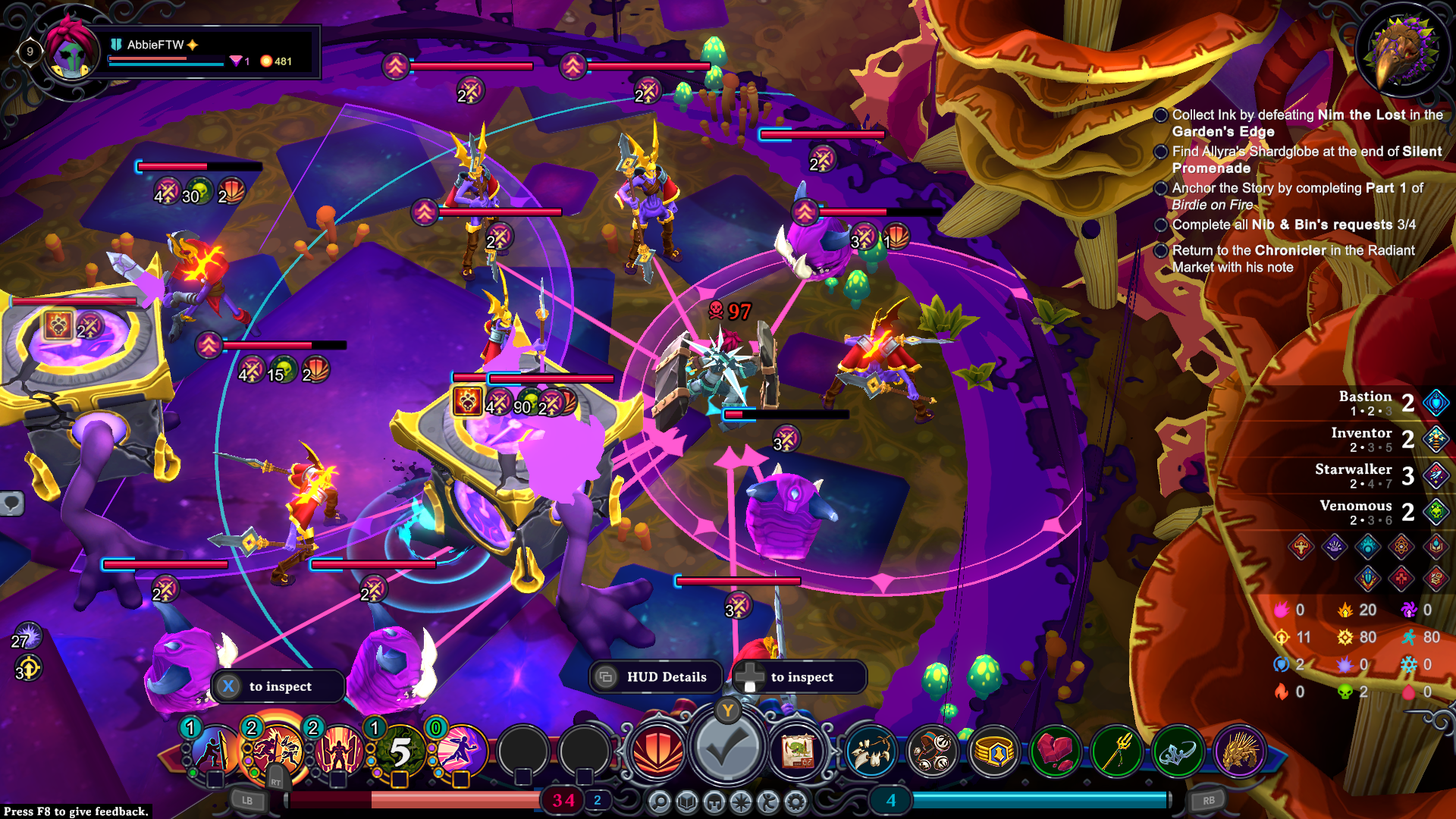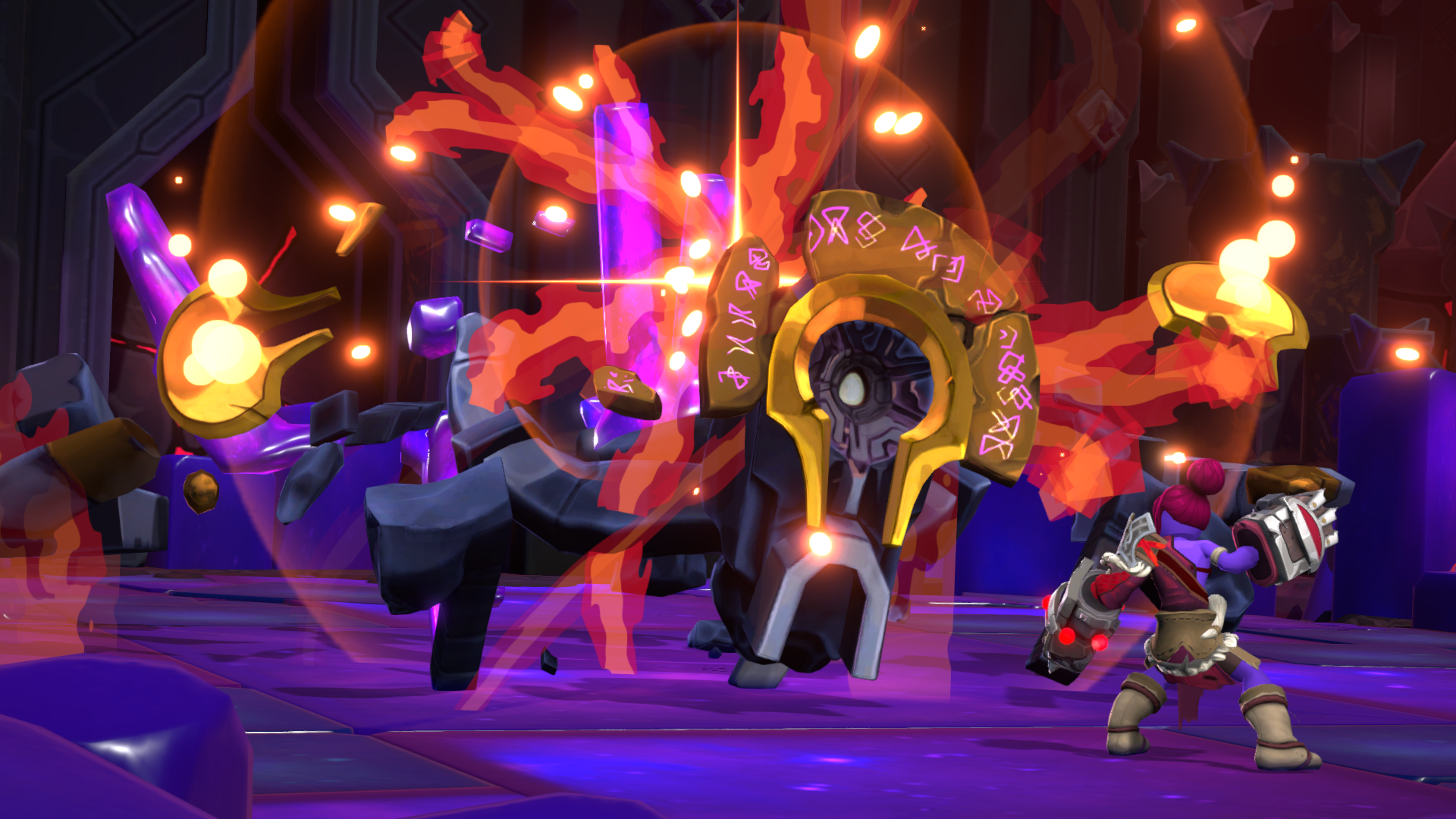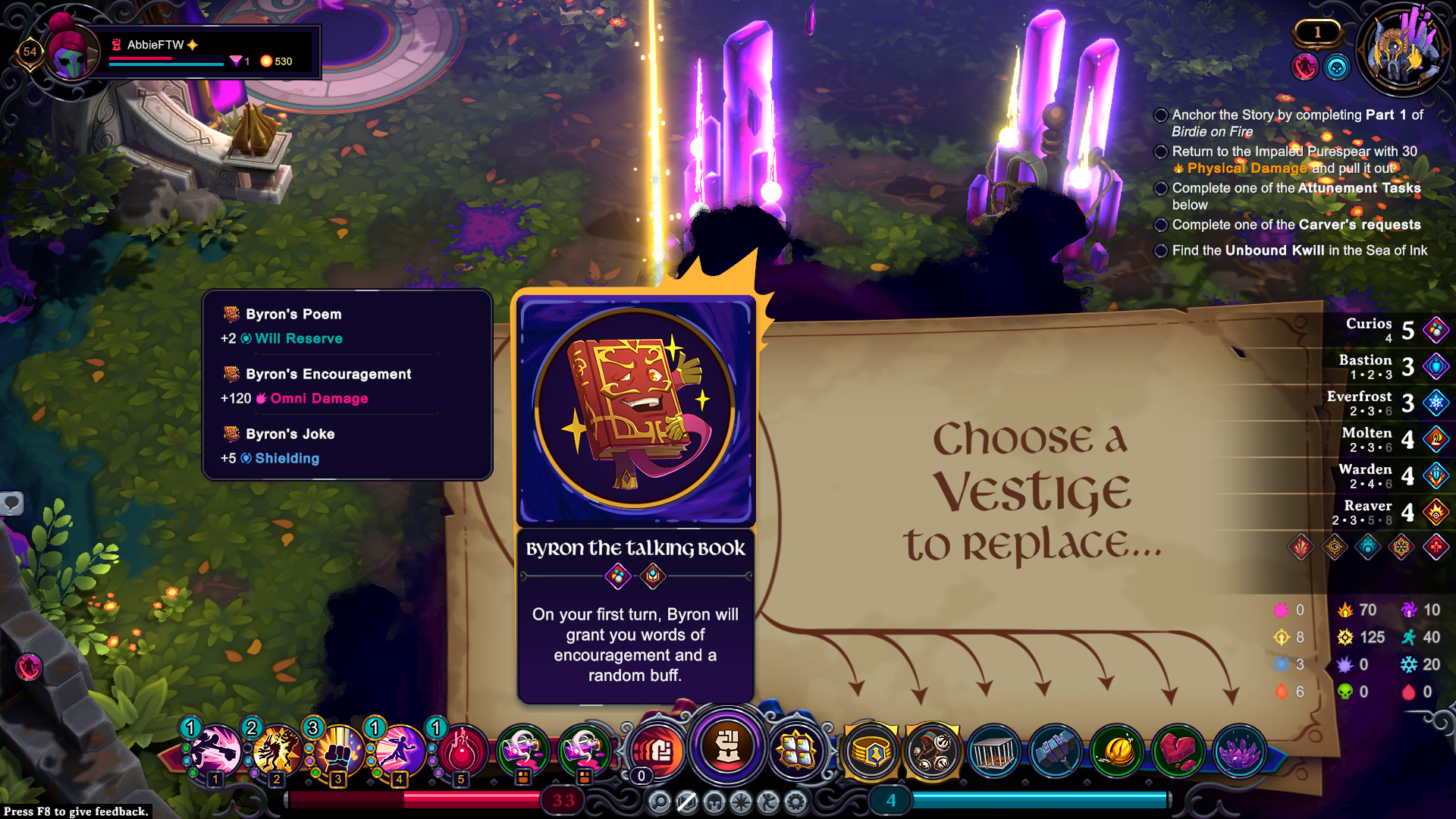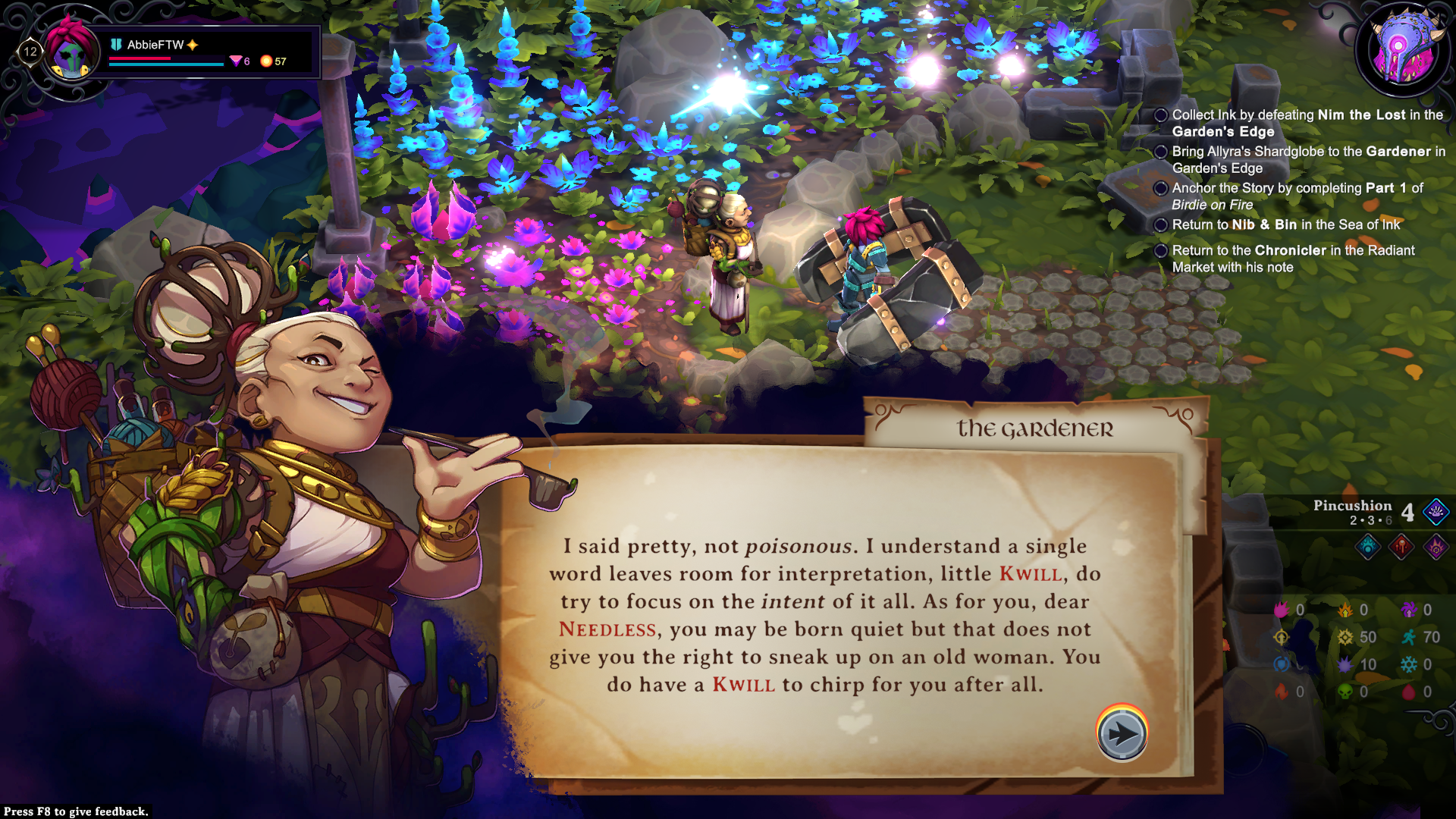[ad_1]
Have to Know
What’s it? A turn-based roguelike from the creators of Monster Practice.Launch date April 9, 2024Expect to pay $30/£25 Developer Shiny ShoePublisher Shiny ShoeReviewed on ROG Ally, Gigabyte G5Steam Deck PlayableLink Official website
Oh, Inkbound. I so desperately need to love you. You’re from the studio that mashed collectively deckbuilders and tower defence to make Monster Practice, one among my favorite video games ever. This time although Shiny Shoe has blended a Hades-style isometric roguelike with turn-based ways and made a little bit of an inky mess everywhere in the flooring. An attention-grabbing mess, with one glorious thought, however I’m nonetheless about to make use of up quite a lot of digital ink complaining about its flaws.
Hades didn’t invent the isometric roguelike nevertheless it’s clearly an everyday hang-out in Shiny Shoe’s Steam library. The affect is in every single place, not simply in its look, however in how Inkbound makes use of the roguelike construction as a part of its story, steadily including new dialogue to recurring characters you meet on runs and that regularly populate the principle hub and instantly acknowledging that you simply’re combating by means of these eventualities repeatedly.
You’re a Pointless (hey!), a warrior in some type of magical library the place evil ink is destroying all of the poor storybooks… I feel? It’s laborious to not tune out when the solid are so tiresomely capital-Q quirky and the plot is the type of fantasy hogwash the place you’re feeling your self taking extra psychic injury with each correct noun. It’s a narrative about tales, which solely attracts consideration to the truth that it isn’t a very compelling one itself.
The place it correctly breaks away from Hades is that Inkbound is solely turn-based. Battles begin with enemies surrounding you and kindly telegraphing precisely how they’re going to assault. You’ve bought a restricted quantity of motion and assault energy every flip to deal as a lot injury as doable, construct up sufficient defend to dam incoming blows, or transfer out of the way in which so that you keep away from them solely. A quantity hovers over your head telling you ways a lot injury you’re going to take. See a cranium subsequent to that quantity? Begin selecting out a pleasant coffin.
Killing enemies, elevating your defences, and sprinting and teleporting across the enviornment to steadily chip that lethal quantity all the way down to zero delivers a smug sense of triumph that has me repeatedly punching the air. However due to an absence of readability I’m simply as usually decreasing that fist to scratch my head, as I am left clueless how I am anticipated to get out of a sure lethal state of affairs. Positioning your self and your enemies to keep away from injury in a turn-based technique sport can’t assist however remind me of PC Gamer favorite Into The Breach. The genius of that sport was in how clear and readable its little dying dioramas had been. You can have printed them within the puzzle pages of a newspaper. Inkbound not a lot.

It’s additionally much less reactive than I’d like. A number of assaults are designed to toss enemies across the battlefield, however this hardly ever creates alternatives to reposition incoming assaults.
Its assaults are available three flavours. Space of impact assaults are proven by a circle displaying the affect zone. Direct, unavoidable assaults are arrows connecting you to the offending enemy. Assaults that see enemies charging you might be an arrow with a rectangle round it. These are wonderful in isolation, however once they’re all in play, as they regularly are, it may be like making an attempt to grasp the world’s most cluttered, over-annotated venn diagram of dying. Generally my eyes wrestle to interpret this a lot motion onscreen and so does the sport’s UI.
A vital quantity above enemies’ heads exhibits how a lot injury they’re going to hit you for. I’ve had that quantity hidden from me as a result of it’s overlapping one other quantity on the display screen, leaving whether or not I ought to prioritise attacking that enemy a harmful thriller. You will get fairly far right into a run questioning what on Earth I’m bellyaching about, however see in the event you really feel the identical manner when the display screen is full of enemies throughout one among its nastier (and never rare) issue spikes. Into the Breach, a sport I promise to now cease shoehorning into this evaluate, had a restricted time-rewind characteristic that allow you to experiment and take dangers. Inkbound would profit from one thing comparable to assist mitigate its extra irritating and obtuse moments.
It’s additionally much less reactive than I’d like. A number of assaults are designed to toss enemies across the battlefield, however this hardly ever creates alternatives to reposition incoming assaults. One transfer that has you punching foes into one another feels prefer it must be the setup for one thing like this. As a substitute, fights nonetheless simply encompass wailing on the enemy’s well being bar as a lot as doable then operating headless chicken-style across the enviornment in determined search of comparatively protected floor.

You may play the sport in on-line co-op with as much as three associates, and the sport pushes you in that course, particularly with its nearly MMO-like hub the place different gamers will be seen scampering between distributors. In concept bringing a number of characters alongside ought to open up the technique exponentially, permitting you to mix completely different builds and talents into new synergies—however in apply that lack of readability of data makes it troublesome to maintain observe of what your mates are doing and why, and if something extra characters on display screen solely makes battles even much less readable.
These final a number of hundred phrases of moaning aren’t simply because I’m an disagreeable little goblin. I’m a heartbroken goblin, as a result of together with all these points there may be sufficient good in right here to maintain me coming again. You get 4 starter loadouts, with so many glorious alternatives for customisation throughout a run you can end with them being nearly unrecognisable from the place you began. Some do keep constantly crap—my honest congratulations in the event you’ve discovered easy methods to get the mage that ties enemies along with thread to really feel enjoyable—however you shouldn’t wrestle an excessive amount of to discover a first rate brawler that’s pleasant to form.
You get three beginning assaults, with house to acquire a number of extra, and these will be augmented with bonuses like inflicting poison, supplying you with defend in the event you use them in a sure manner, or elevated space of impact. Naturally you’re making an attempt to select powers and upgrades that work properly with one another, like an assault that’s devastatingly highly effective however gradual to recharge with one other that reduces your cooldowns. Stable stuff, albeit nothing earth-shatteringly unique. It’s the vestiges the place the sport begins getting intelligent, bordering on good.
Smashing thought

Vestiges are talismans that grant a selected boon, equivalent to inflicting burning everytime you assault or granting bonus injury in your first flip. Additionally they every belong to a number of “units”—themed teams of vestiges. The extra of an identical set you could have, the extra additional bonuses you unlock. So a vestige that provides bleed to your assaults, for instance, may have “Eviscerator” as one among its units, which grants bonus bleed injury when you have two of that set, buffs your assaults in opposition to enemies which are already bleeding when you have three, and heals you while you deal bleed when you have six.
We have seen equal ideas in different video games, after all, however Inkbound’s cleverest twist is that it encourages you to smash your vestiges to bits. At sure factors in your journey, you possibly can select to destroy a vestige, dropping its core impact however completely gaining double all its units. Throw that bleed vestige into the grinder, for instance, and from then on you will all the time have a minimum of two factors in Eviscerator, as in the event you had two additional vestiges of that sort.

It is usually a deliciously troublesome alternative, as a result of the vestiges you will profit most from destroying are prone to be those whose powers synergise most together with your construct.
With restricted vestige slots, you all the time need to be breaking them for these bonuses and making manner for brand new ones. However it’s usually a deliciously troublesome alternative, as a result of the vestiges you will profit most from destroying are prone to be those whose powers synergise most together with your construct, and also you’re usually sacrificing energy within the current within the hope that you will construct to higher heights sooner or later. The rarer and extra highly effective the vestige is, the extra units it belongs to, making your best and most irreplaceable treasures essentially the most tempting targets for destruction. It seems like a genuinely new twist on roguelike character-building, and it is in these moments of agonising over the best choice you can see most clearly that it is a sport from the geniuses behind Monster Practice.
As you full runs, you achieve everlasting development, however as a substitute of bettering your stats, levelling up simply unlocks extra vestiges, making your adventures more and more attention-grabbing with a higher unfold of doable combos, fairly than merely simpler. Exploring all these prospects is the place the sport is at its finest. However at any time when I begin to really feel I’ve a extremely stable grip on my vestige technique, that is after I inevitably hit some wall of a battle the place I am unable to for the lifetime of me work out what I am doing unsuitable.
After enjoying a few hours of multiplayer with one of many PCG group, he just about swore off the sport solely after one abruptly seemingly inconceivable struggle, and despite the fact that I’m nonetheless having enjoyable with it myself, I can perceive why. I’ll undoubtedly return to Inkbound’s properly on occasion to see the way it evolves and hopefully improves, however although it has its intelligent charms, it gained’t be changing Monster Practice on my Steam Deck simply but.
[ad_2]
Source link

